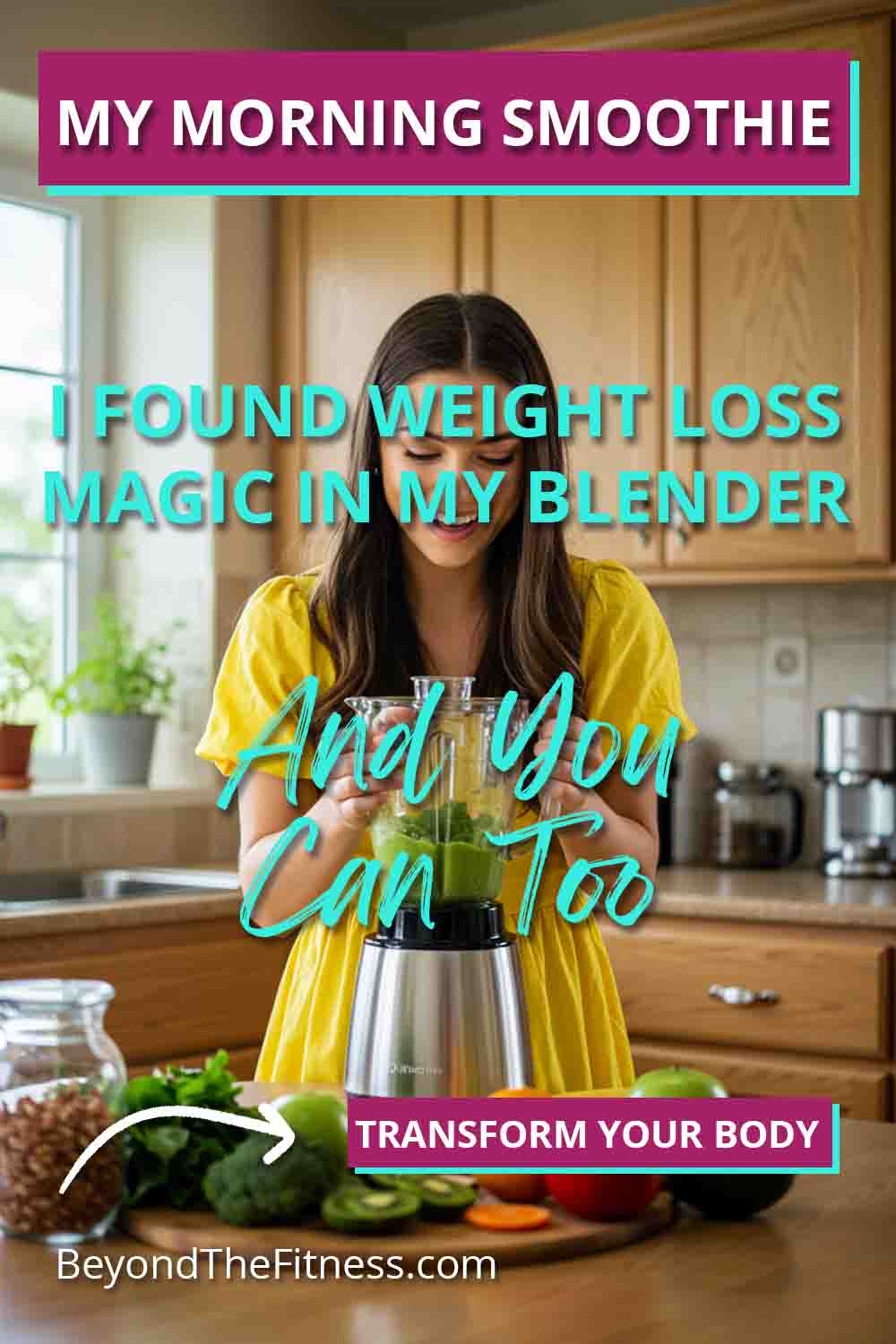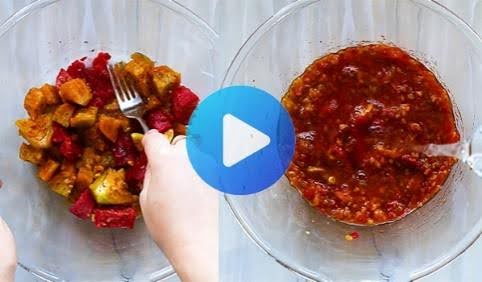Hello there. Let’s talk about something delicious and potentially powerful for your weight loss journey: smoothies. You see them everywhere, looking bright and healthy. But can blending up fruits and veggies really help you shed pounds? As someone who works with women aiming for healthier lifestyles, I can tell you that yes, smoothies can be a fantastic tool, but only if you make them the right way. Think of your blender as a helpful kitchen friend, ready to whip up something nutritious, but it needs good instructions from you.
Why Smoothies Can Be Great for Weight Loss
So, what makes a smoothie potentially good for managing your weight? It comes down to a few key things.
Nutrient Powerhouses
When you make a smoothie correctly, you can pack an incredible amount of nutrients into one glass. Think vitamins, minerals, and antioxidants. You can easily add leafy greens like spinach or kale, which many people don’t eat enough of. Fruits bring vitamin C and other goodies. Adding things like seeds or yogurt boosts protein and healthy fats. Getting enough nutrients is super important when you’re trying to lose weight. Your body needs these building blocks to function well, keep your energy up, and support a healthy metabolism, which is like your body’s engine for burning calories. When your body is well-nourished, you often feel better and might even find cravings decrease because your body isn’t searching for missing nutrients.
Fiber for Fullness
Fiber is a superstar for weight loss. It helps you feel full and satisfied after eating, which can stop you from overeating later. Fiber also helps keep your digestion running smoothly and can help manage blood sugar levels. Many smoothie ingredients are packed with fiber, especially fruits (keep the skin on when possible, like apples or pears), vegetables, chia seeds, flax seeds, and oats. When you blend these ingredients, you keep the fiber, unlike juicing, which often removes it. That feeling of fullness is key. If your smoothie keeps you satisfied for a few hours, you’re less likely to reach for unhealthy snacks between meals. This helps you stay within your daily calorie goals more easily.
Controlling Calories
Smoothies can be a great way to control your calorie intake, especially if you use them to replace a less healthy meal or snack. You have complete control over what goes in. You can choose lower-calorie liquids like water or unsweetened almond milk instead of juice or whole milk. You can measure your ingredients carefully. A well-planned smoothie can be filling and nutritious for fewer calories than, say, a big breakfast pastry or a fast-food lunch. This calorie control is fundamental to weight loss. To lose weight, you generally need to consume fewer calories than your body burns each day. Smoothies can make tracking and managing those calories simpler.
Quick and Easy Nutrition
Let’s be honest, life gets busy. Sometimes, finding time to cook a balanced meal feels impossible. This is where smoothies shine. They take just a few minutes to make. Toss your ingredients in the blender, whiz them up, and you have a portable meal or snack ready to go. This convenience can be a lifesaver, preventing you from grabbing unhealthy convenience foods when you’re rushed or tired. For busy moms, working women, or anyone juggling multiple responsibilities, having a quick, healthy option readily available makes sticking to a weight loss plan much more achievable.
The Smoothie Trap: When Good Drinks Go Bad
Now, here’s the important part. Not all smoothies are created equal. It’s incredibly easy to turn a potentially healthy drink into a sugar bomb that actually hinders your weight loss efforts. I see this happen all the time. People think they’re making a healthy choice, but their smoothie is packed with hidden calories and sugar.
Sugar Overload
This is the biggest trap. Many people load up their smoothies with too much fruit, sweetened yogurts, fruit juices, honey, maple syrup, or agave nectar. While fruits have natural sugars and offer nutrients, too much can add up quickly, spiking your blood sugar and adding lots of calories. Fruit juice is particularly tricky because it lacks the fiber of whole fruit and is basically concentrated sugar water. Sweeteners, even “natural” ones like honey, are still added sugars. A smoothie that tastes super sweet like a dessert is probably not your best bet for weight loss. These sugar spikes can lead to energy crashes later, making you crave more sugary foods, creating a cycle that’s hard to break.
Hidden Fats
Healthy fats are important, but portion control is key. Things like avocado, nuts, seeds, nut butters, and coconut oil are nutritious but very calorie-dense. A couple of tablespoons of peanut butter or a whole avocado can add hundreds of calories to your smoothie. While these fats can help with satiety, overdoing it can easily push your smoothie’s calorie count way too high for weight loss. It’s about balance. A small amount of healthy fat is good; a large amount can sabotage your goals.
Portion Distortion
How big is your smoothie glass? Sometimes we fill up huge cups without realizing how much food we’re actually blending. A smoothie intended as a snack might end up having enough calories for a full meal if the portion size is too large. It’s easy to drink calories faster than you eat them, and you might not feel as full from drinking compared to eating the same ingredients whole. Pay attention to the total volume and the calorie count of your finished smoothie. Using a standard-sized glass can help keep portions in check.
Not Enough Protein or Fiber
On the flip side, some smoothies might be too low in protein and fiber. If your smoothie is mostly fruit and juice, it might give you a quick burst of energy, but you’ll likely feel hungry again soon after. Protein and fiber are crucial for keeping you full and satisfied. Without enough of these, your “healthy” smoothie won’t keep hunger away, potentially leading you to eat more later. This defeats the purpose if you’re using it as a meal replacement or a way to manage hunger.
Building Your Perfect Weight Loss Smoothie
Okay, so how do you make a smoothie that actually helps with weight loss? It’s like building with blocks – you need the right pieces in the right amounts.
Step 1: Pick Your Liquid Base
Start with a low-calorie, unsweetened liquid. Avoid fruit juices or sweetened milks.
- Good Choices: Water (zero calories), unsweetened almond milk, unsweetened cashew milk, unsweetened soy milk, green tea (cooled), coconut water (in moderation, check for added sugar).
- Amount: Aim for about 1 cup (8 ounces). You can adjust slightly depending on how thick or thin you like it.
Step 2: Choose Your Fruits (Wisely)
Fruit adds sweetness, vitamins, and fiber. But remember portion control.
- Good Choices: Berries (strawberries, blueberries, raspberries – lower in sugar, high in antioxidants), half a banana (adds creaminess), small apple or pear (skin on), peach, mango (use smaller amounts as they are higher in sugar). Frozen fruit works great and makes the smoothie cold and thick without needing ice.
- Amount: Stick to about 1/2 to 1 cup of fruit total. Think of it as one serving of fruit.
Step 3: Add Vegetables
This is where you can really boost the nutrients without adding many calories or much sugar. You often won’t even taste them.
- Good Choices: Spinach (mild flavor), kale (stronger flavor), cucumber (refreshing), zucchini (adds creaminess, mild flavor), cooked beets (earthy flavor, adds color), celery, carrot (adds sweetness).
- Amount: Start with one large handful of leafy greens or about 1/2 cup of other chopped veggies. Be adventurous.
Step 4: Power Up with Protein
Protein is essential for satiety, muscle maintenance (important during weight loss), and metabolism.
- Good Choices: Plain Greek yogurt (unsweetened), protein powder (whey, casein, soy, pea, or rice protein – look for low-sugar options), cottage cheese (unsweetened), silken tofu, hemp seeds.
- Amount: Aim for 15-25 grams of protein per smoothie, especially if using it as a meal replacement. Check the label on your protein powder or yogurt for serving sizes.
Step 5: Fantastic Fiber and Healthy Fats
Add a boost of fiber and a small amount of healthy fat for extra staying power and nutritional benefits.
- Good Choices: Chia seeds, flax seeds (ground works best for nutrient absorption), hemp seeds, psyllium husk (start small), avocado (1/4 max), nuts or seeds (1 tablespoon max), unsweetened nut butter (1 tablespoon max).
- Amount: 1-2 tablespoons of seeds, or the small amounts listed for avocado/nuts/butter. Remember, these add calories quickly.
Step 6: Flavor Boosters (Sugar-Free)
Enhance the taste without adding sugar.
- Good Choices: Cinnamon, nutmeg, ginger (fresh or powdered), vanilla extract (pure), unsweetened cocoa powder, fresh mint, lemon or lime juice/zest.
- Amount: Use to taste. Spices like cinnamon can also help with blood sugar regulation.
Putting it Together: Combine liquid, greens, fruit, protein source, fiber/fat source, and flavor boosters in your blender. Blend until smooth. Add more liquid if it’s too thick, or a few ice cubes if you want it colder (or use frozen fruit/veg).
You Might Be Interested In: Learning more about The Complete Smoothie Detox & Weight Loss Program
Smoothies and Female Health
As women, our nutritional needs can change throughout our lives due to menstrual cycles, pregnancy, and menopause. Smoothies can be tailored to help meet these specific needs.
Meeting Nutrient Needs
Certain nutrients are especially important for women.
- Iron: Many women, particularly during their reproductive years, need adequate iron to prevent fatigue and anemia. Adding spinach or kale to your smoothies is an easy way to boost iron intake. Combining it with a source of vitamin C (like berries or citrus) helps your body absorb the iron better.
- Calcium and Vitamin D: These are crucial for bone health, especially as women age and risk of osteoporosis increases. If you use fortified plant milk (like almond or soy) or dairy like Greek yogurt or milk as your base, you’re getting a good dose of calcium and often vitamin D.
- Folate: Important for all women, but especially critical during childbearing years. Leafy greens like spinach are excellent sources of folate.
Hormonal Balance
What you eat can influence your hormones. Smoothies that are balanced – meaning they have protein, fiber, and healthy fats, and aren’t loaded with sugar – can help keep your blood sugar stable. Avoiding those big sugar spikes and crashes is beneficial for hormonal balance, potentially helping with mood swings, energy levels, and even conditions like Polycystic Ovary Syndrome (PCOS) where insulin sensitivity is often a concern. Ingredients like flax seeds contain lignans, which may have a positive effect on estrogen balance for some women.
Energy for Active Women
If you lead an active lifestyle, whether it’s running, yoga, weightlifting, or just keeping up with kids, your energy needs are higher. A well-formulated smoothie can be a perfect pre- or post-workout fuel. Include carbohydrates (from fruit/veg) for energy and protein (from powder, yogurt) for muscle repair and recovery. Tailoring the ingredients to your activity level ensures you’re fueling your body effectively without consuming excess calories.
Making Smoothies Work for You
Knowing how to build a healthy smoothie is one thing; fitting it into your life effectively is another.
When to Have Your Smoothie
Think about how the smoothie fits into your overall eating pattern.
- Meal Replacement: If your smoothie is balanced with protein, fiber, healthy fats, and sufficient calories (usually 300-400 calories), it can replace a meal like breakfast or lunch. This works well if you’re short on time or want a lighter option. Ensure it’s satisfying enough to keep you full until your next meal.
- Snack: A smaller, lower-calorie smoothie (around 150-250 calories) can be a great snack between meals to tide you over and prevent overeating later. Focus on protein and fiber for staying power.
- Post-Workout: A smoothie with protein and carbs is ideal within an hour or so after exercise to help muscles recover and replenish energy stores.
Smoothies Are Not Magic Bullets
It’s crucial to remember that smoothies alone won’t make you lose weight. Weight loss happens when you consistently consume fewer calories than you burn over time. Smoothies are just one tool in your toolbox. They need to be part of an overall healthy diet rich in whole foods (vegetables, fruits, lean proteins, whole grains, healthy fats) and combined with regular physical activity. You can’t drink a healthy smoothie for breakfast and then eat junk food the rest of the day and expect results.
Listen to Your Body
Pay attention to how different smoothie combinations make you feel. Does it keep you full? Do you feel energized? If a smoothie leaves you hungry an hour later, it might need more protein or fiber. If it feels too heavy or causes digestive upset, maybe adjust the ingredients (too much fiber at once can sometimes cause issues if you’re not used to it). Your body provides valuable feedback.
Meal Prep Tips
Make smoothie-making even faster with a little prep.
- Freezer Packs: Portion out your solid ingredients (fruit, veggies, seeds, even protein powder) into individual freezer bags or containers. When ready to blend, just dump the contents of one pack into the blender, add your liquid, and blend. This is a huge time-saver for busy mornings.
- Prep Ingredients: Wash and chop veggies or fruits ahead of time. Store greens properly so they stay fresh. Keep your protein powder and seeds easily accessible.
Delicious Weight Loss Smoothie Ideas
Need some inspiration? Here are a few balanced ideas to get you started. Remember you can adjust these based on your preferences and what you have on hand.
Green Goddess Smoothie
This one is packed with greens but tastes surprisingly refreshing.
- 1 cup unsweetened almond milk or water
- 1 large handful spinach
- 1/2 cup chopped cucumber
- 1/4 avocado
- 1 scoop vanilla or unflavored protein powder
- 1 tablespoon chia seeds
- Juice of 1/2 lime
- Optional: Few mint leaves
Berry Protein Blast
A classic favorite, full of antioxidants and protein.
- 1 cup water or unsweetened soy milk
- 1/2 cup mixed berries (frozen)
- 1/2 small banana (frozen, optional for creaminess)
- 1 scoop vanilla or berry-flavored protein powder
- 1 tablespoon ground flax seeds
- Optional: Small handful of kale (you won’t taste it with the berries)
Chocolate Peanut Butter Dream (Healthy Version)
Satisfy cravings the healthy way. Portion control is key here.
- 1 cup unsweetened cashew milk
- 1/2 banana (frozen)
- 1 scoop chocolate protein powder
- 1 tablespoon unsweetened peanut butter (or almond butter)
- 1 tablespoon unsweetened cocoa powder
- 1 tablespoon chia seeds
- Optional: Handful of spinach
Tropical Delight
A taste of the tropics without the sugar overload.
- 1 cup coconut water (unsweetened) or water
- 1/2 cup frozen mango chunks
- 1/4 cup frozen pineapple chunks
- 1 scoop unflavored or vanilla protein powder
- 1 tablespoon hemp seeds
- Optional: Small piece of fresh ginger
Feel free to mix and match ingredients based on the formula: Liquid + Fruit (controlled portion) + Veggie + Protein + Fiber/Fat + Flavor Booster.
Beyond the Blender: Whole Foods Matter
While smoothies are convenient and nutritious, they shouldn’t be the only way you consume fruits and vegetables.
Why Chewing is Important
The act of chewing your food actually plays a role in digestion and satiety. Chewing sends signals to your brain that you’re eating, which helps you register fullness. When you drink a smoothie, you bypass this step. While smoothies can be filling due to fiber and protein, sometimes eating the whole fruit or vegetable can feel more satisfying psychologically. Chewing also helps break down food mechanically, aiding digestion.
Variety in Your Diet
Relying too heavily on smoothies might limit the variety of foods you eat. A balanced diet includes a wide range of whole foods in their natural state. Eating salads, roasted vegetables, grilled lean proteins, and whole grains provides different textures and nutrient combinations. Aim for a mix of smoothies and whole-food meals throughout your week for the best overall nutrition and satisfaction. Think of smoothies as a supplement to, not a complete replacement for, a diverse, whole-foods-based diet.
Making smoothies a part of your weight loss plan can be effective and enjoyable. By focusing on nutrient-dense, low-sugar ingredients, controlling portions, and ensuring enough protein and fiber, you can blend your way to a healthier you. Remember it’s about creating sustainable habits that fit into your lifestyle.
Related YouTube Video
Final Thoughts
Embarking on a weight loss journey is a personal and often challenging path. Incorporating well-designed smoothies can be a genuinely helpful strategy, especially for busy women seeking convenient nutrition. It’s not about finding a single magic solution, but about building a collection of healthy habits that work together. Seeing smoothies as a tool, rather than a cure-all, keeps expectations realistic. Pay attention to how your body responds, enjoy the process of experimenting with flavors and ingredients, and remember that consistency in your overall diet and activity level is what truly drives long-term success. Be patient and kind to yourself along the way. You are building a healthier relationship with food and your body, one blend at a time.







